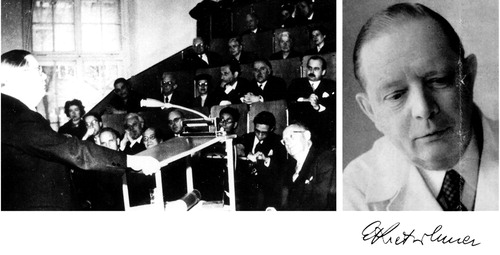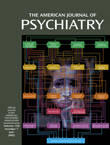Ernst Kretschmer (1888–1964)
Ernst Kretschmer was one of the most important psychiatrists during the first half of the 20th century. He was born in Wüstenrot, a small town near Stuttgart (Württemberg). Kretschmer started his psychiatric career in Tübingen as assistant to Robert Gaupp (1870–1953). Beginning in 1926, Kretschmer was director of the psychiatric university clinic in Marburg (Hessen), and from 1946 until his retirement in 1959 he was director of the psychiatry department of the University of Tübingen. Kretschmer’s monographs gained considerable influence on the development of clinical psychiatry and psychiatric research between the world wars, especially “Der sensitive Beziehungswahn” (1918) and “Körperbau und Charakter” (1921; the English translation, “"Physique and character,” was published in 1925).
Kretschmer was mainly interested in the relationship between premorbid physical or psychological characteristics and the etiology of mental disorders. Whereas Kraepelin proposed a dichotomy of dementia praecox and manic-depressive illness, Kretschmer presented an alternative nosological concept: the idea of constitutional body types. He established the well-known trifold typology of the “leptosome,” “athletic,” and “pyknic” habitus. In addition, Kretschmer introduced new psychotherapeutic but nonpsychoanalytical methods, e.g., “active hypnosis.”
On Feb. 23, 1956, Kretschmer received the Golden Kraepelin Medal, together with Ludwig Binswanger (1881–1966). This award was created in 1928 by the Deutsche Forschungsanstalt für Psychiatrie (Munich) in commemoration of its founder, Emil Kraepelin (1856–1926), to honor outstanding psychiatric researchers. The photograph on the left—originally published in a Spanish publication (1) about Kraepelin"s centenary in 1956—shows Kretschmer during his speech in the auditorium at the psychiatric clinic of the University of Munich. At this time, 11 years after the end of World War II, the building of the Deutsche Forschungsanstalt für Psychiatrie (today the Max Planck Institute of Psychiatry) was still under reconstruction. Among other recipients of the Golden Kraepelin Medal is Arvid Carlsson, who received the medal in 1997 and the Nobel Prize in 2000.
Address reprint requests to Dr. Pedrosa Gil, Ludwig Maximilian University, Psychosomatic Department, Pettenkoferstrasse 8a, D-80336 Munich, Germany; Francisco.Pedrosa [email protected] (e-mail). Image on left courtesy of Dr. Francisco Llavero. Image on right courtesy of the Clendening History of Medicine Library, University of Kansas Medical Center.

Ernst Kretschmer
1. Llavero F: Centenario de Emil Kraepelin y la psiquiatria de hoy con algunas cuestiones de principio. Actas Luso-Españolas de Neurologia y Psiquiatria 1956; 15:232-260Google Scholar



